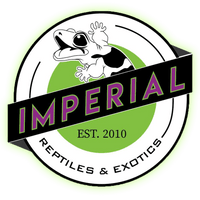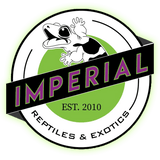General care guide for Knob-tailed geckos a.k.a Nephrurus sp. Additional research may apply

The Knob-Tailed Gecko
Australia is home to many strange and wonderful animals. The knob-tailed gecko is no exception. If the name didn’t give it away, these little geckos have a short and stubby tail with a tiny ball at the tip of it. These are a ground dwelling species that lack the stereotypical sticky toe pads most geckos have and have a comically large head with big eyes. There are a few different species of Knob-tails, all inhabiting the arid desert landscapes of the Australian interior. Each has its own pattern and skin texture, and can range anywhere from 4 to 6 inches in length. 10 years is the average lifespan for these geckos. Knob-tailed geckos are famous for their defensive posture, raising their legs up high and arching their back to intimidate whatever thought about taking them on in a fight.

Knob-Tailed Gecko Care
Knob-tails are not a very difficult species to keep. They’re insectivores and tend to prefer prey that moves, so crickets and other mobile insects are great feeders and can be fed every other day to these geckos. Make sure to always dust any feeder insects with calcium and vitamin supplements. Being a small species, enclosure size is also quite manageable. Babies can be kept in a 10 gallon terrarium and can be upgraded to 20 gallons and up as adults. This species does not climb much so prioritize a long enclosure over a tall one. It is recommended to keep knob-tails individually and should only be introduced together during breeding season. Sand tends to be the best substrate to keep this species on, as they are native to sandy landscapes in the wild and are adapted to living in loose substrate. Knob-tailed geckos are nocturnal and spend most of their time hiding during the day, so provide at least two hides (one on the hot side and one on the cool side) for them to use until nighttime where they come out to explore and hunt. A small water dish can be provided but light misting every few days works best to provide hydration as standing water is something these geckos don’t experience naturally. Ironically, these geckos don’t like a lot of heat even though they’re desert dwellers. Knob-tailed geckos are comfortable with a basking temperature in the mid 80 degrees F, capped at about 88 degrees F. This can be achieved via heat bulb or heat pad. Many keepers prefer using heat pads for this species due to their shy nature and nocturnal behavior.

Knob-Tailed Geckos For Sale in the Pet Trade
Knob-tailed geckos are fairly easy to handle, but they do not sit still as much as a leopard or fat-tailed gecko. These geckos do stress out easily so keep handling sessions short and sweet. Being an Australian species, all knob-tails seen on the market are going to be captive bred animals and can carry a mid to high ranged price tag due to them being more difficult to breed than other geckos. Another factor that will affect availability is species. There are many species of knob-tailed gecko each exhibiting different colors, patterns, and sizes, some being rarer than others. Smooth knob-tailed geckos (N. levis) tend to be one of the more common species, as are rough knob-tails (N. wheeleri/cinctus). Morphs are also available within the common species, with albinos and patternless individuals commonly seen for sale. This is a great out of the box alternative to leopard geckos, and can make very interesting animals to keep. Although shy and secretive in nature, knob-tails more than make up for it with their peculiar look and spunky attitudes.
Links:


























